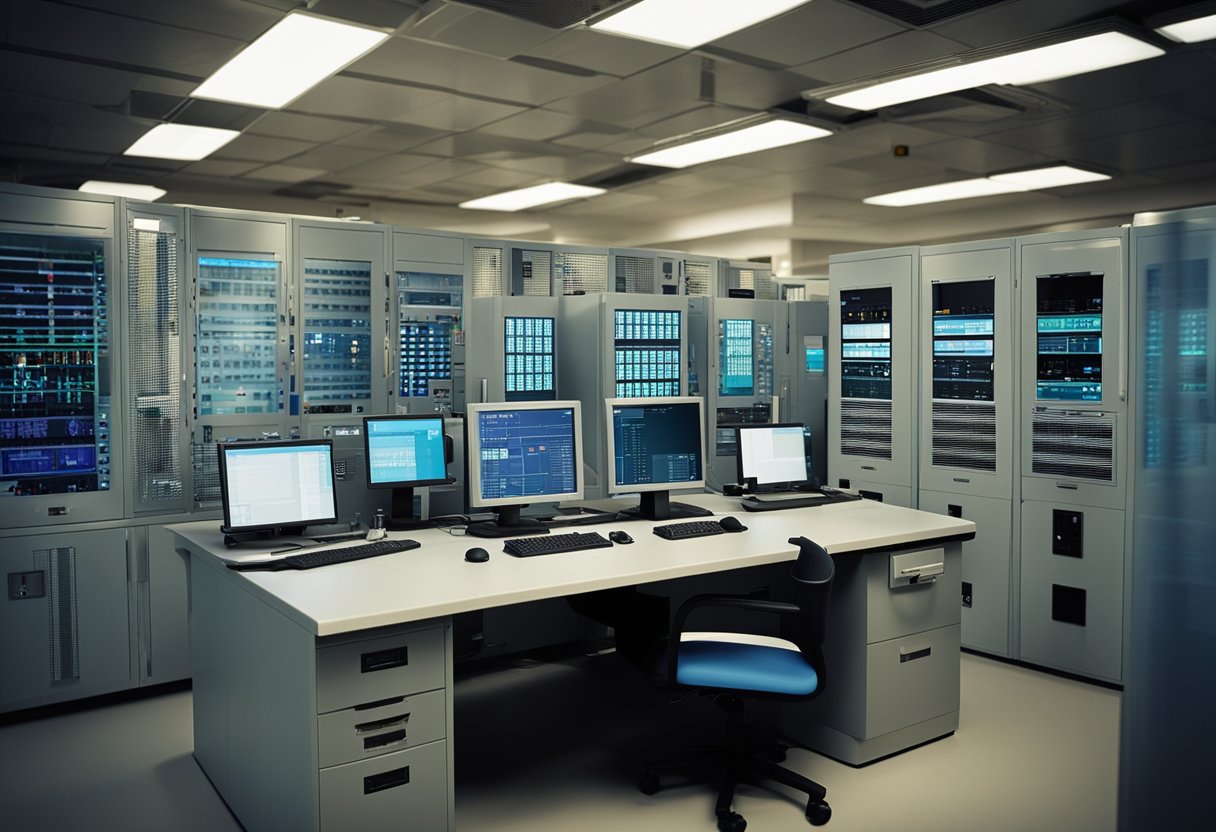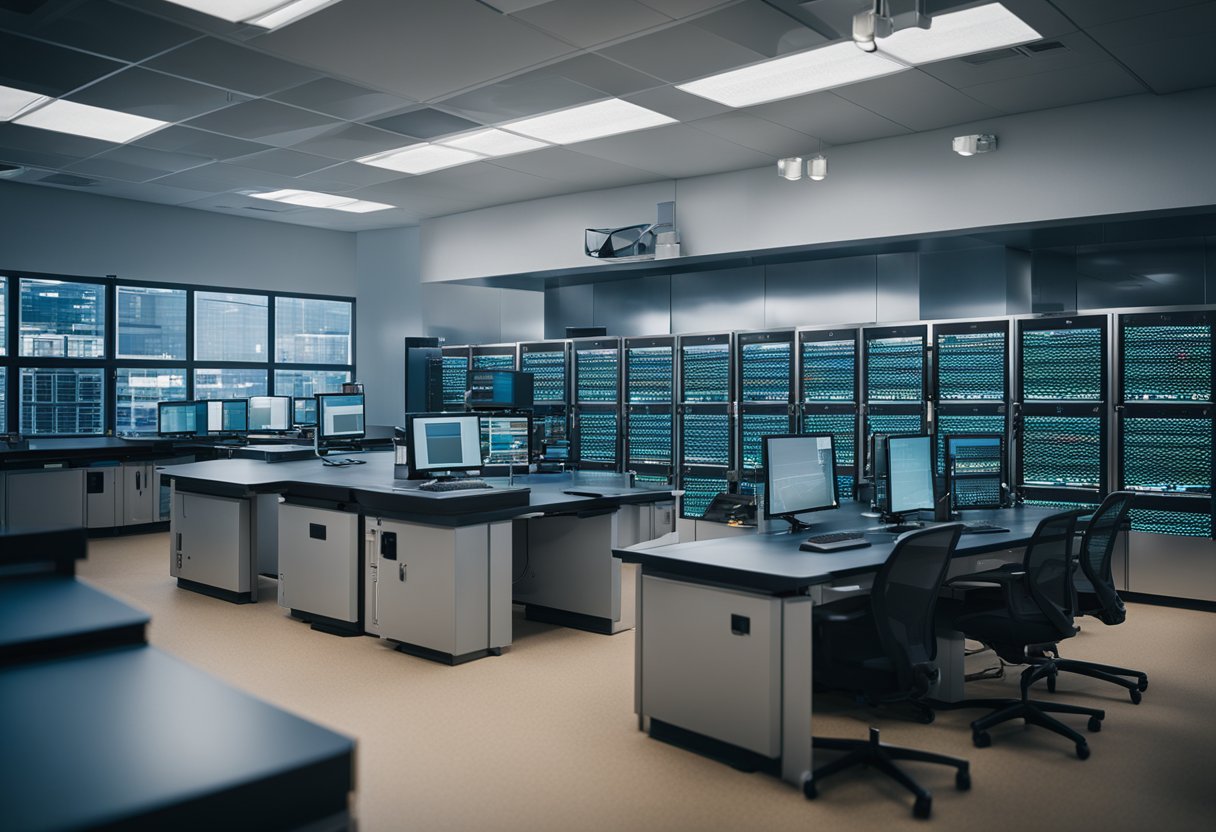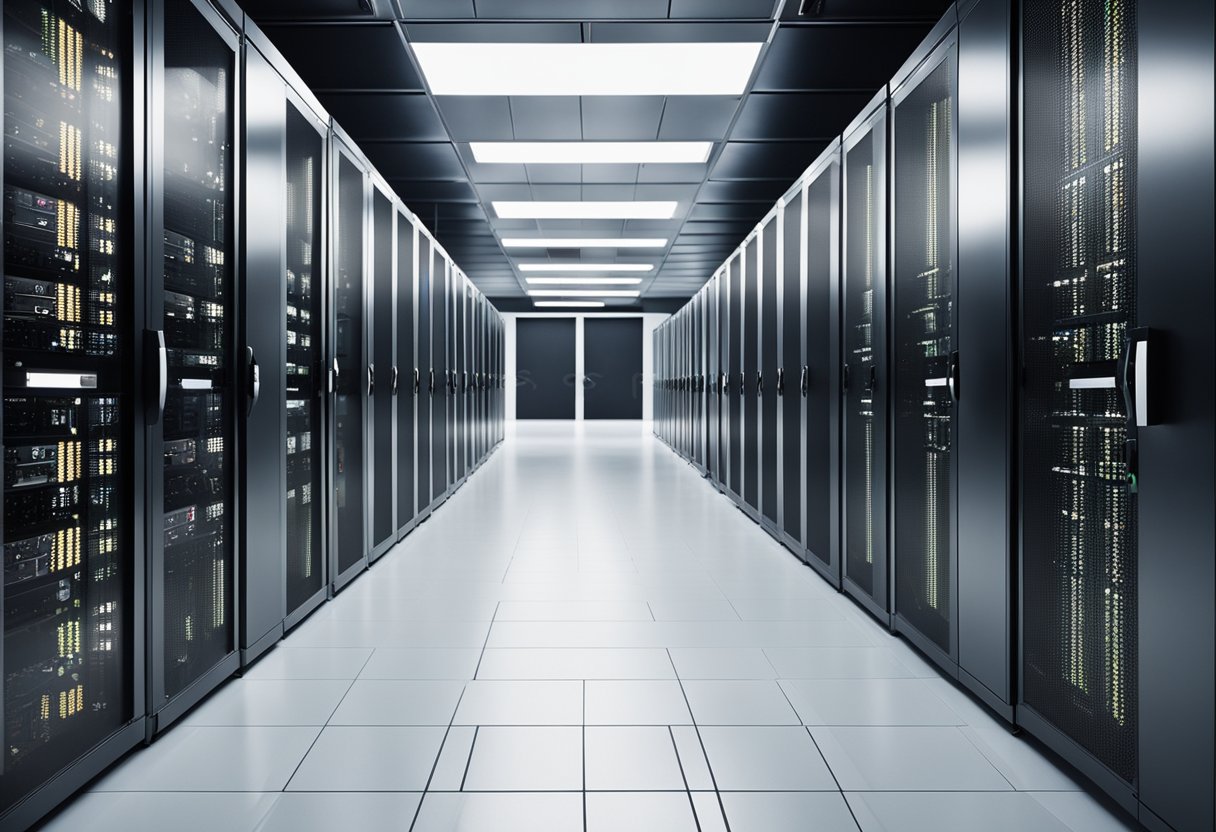Maintaining appropriate humidity levels is crucial for the reliability and longevity of computer equipment, particularly in data centers where numerous IT components operate continuously. While specific environmental conditions like temperature have long been considered vital, it’s the control of humidity that plays an equally important role in the optimal functioning of computer systems. If the humidity is too low, it can lead to electrostatic discharge problems, which can be damaging to sensitive electronic components. Conversely, high levels of humidity increase the risk of condensation and moisture accumulation, potentially causing corrosion or failure of hardware.

Data centers and IT environments adhere to certain standards for humidity levels to ensure efficient and safe operations. The recommended relative humidity (RH) levels for data processing environments generally range from 45% to 55% RH. This range helps in preventing static electricity build-up and avoiding moisture-related issues such as corrosion. To achieve this, advanced monitoring systems are employed to continually assess environmental conditions, and adjustments are made as needed to maintain the appropriate humidity. Adherence to these guidelines is not optional but a necessity for businesses that rely on data centers for their day-to-day operations, as fluctuations can lead to reduced performance or damage to IT equipment.
Key Takeaways
- Appropriate humidity control is critical for the protection and functionality of IT equipment.
- Recommended relative humidity in data centers typically ranges from 45% to 55%.
- Continuous monitoring and environmental adjustments are necessary for maintaining optimal humidity levels.
Importance of Humidity Control

Maintaining the correct humidity levels within data centers and server rooms is crucial to protect computer equipment and ensure optimal performance. Without proper humidity control, hardware may experience a range of issues, including corrosion and reliability concerns.
Effects on Computer Equipment
Computer equipment is highly sensitive to environmental conditions. The correct humidity range is essential to prevent hardware corrosion that can occur when moisture condenses on the components. Electrostatic discharge is another threat, as it is more likely to occur in environments with extremely low humidity, potentially leading to component failure. Therefore, implementing appropriate humidity controls helps maintain electronics reliability and extends the lifespan of the devices.
Risks of Improper Humidity Level
Operating computer equipment outside of the ideal humidity range introduces several risks, including the potential for component failure and server reliability issues:
- High humidity can lead to condensation and corrosion, damaging sensitive electronic parts.
- Low humidity increases the likelihood of electrostatic discharge, which can disrupt or damage electronic components.
It is recommended to maintain relative humidity levels between 45% and 55% to ensure optimal performance and to mitigate these risks.
Humidity Metrics and Standards

Maintaining the correct humidity level is crucial for the longevity and reliability of computer equipment. Standards and guidelines have been established to define optimal conditions within data processing environments.
Understanding Relative Humidity
Relative humidity (RH) is the amount of moisture in the air relative to what the air can hold at a particular ambient temperature. Expressing humidity as a percentage, this measure is significant in data centers since both low and high RH can damage sensitive electronic equipment.
ASHRAE Guidelines
The American Society of Heating, Refrigerating and Air-Conditioning Engineers (ASHRAE) sets forth guidelines for environmental conditions in data processing environments. They advocate for a thermally controlled environment that balances temperatures with the correct humidity levels to ensure equipment efficacy and longevity.
Recommended and Acceptable Ranges
ASHRAE suggests a recommended temperature range of 18 to 27 degrees Celsius combined with a RH of 20% to 80%. The acceptable operating temperature range typically lies between 5 to 32 degrees Celsius to accommodate varying equipment specifications and geographic locations.
- Recommended Humidity Range: Typically between 45% to 55% RH for optimal performance.
- Allowable Humidity Range: Can be as broad as 20% to 80% RH to provide flexibility under different conditions.
Adherence to these ASHRAE standards protects hardware from electrostatic discharge associated with low humidity and from corrosion, which can occur at high humidity levels.
Monitoring and Maintaining Humidity

Maintaining the correct humidity levels within a data center is crucial to protect computer equipment from damage due to static electricity or condensation. A precise balance of humidity levels complements the data center temperature control systems, ensuring equipment longevity and reliability.
Digital Sensors and Alerts
To consistently manage humidity levels, facilities rely on digital temperature & humidity sensors. These sensors measure the ambient conditions accurately and provide real-time data to the monitoring systems. Using thresholds set by the data center managers, these sensors trigger alerts if the humidity deviates from the optimal range—typically between 40-55% relative humidity. The alerts can be programmed to notify maintenance personnel via various channels, including web interfaces, email, and room alert systems, facilitating swift corrective action.
Environmental Monitoring Solutions
Environmental monitoring solutions extend beyond simple sensors, encompassing a suite of tools designed for comprehensive data center management. These systems can integrate various sensor inputs, such as temperature and humidity, providing a holistic view of environmental conditions. Such integration allows for pre-defined response scenarios, such as adjusting HVAC output, engaging dehumidifiers, or alerting staff, thereby maintaining stringent control over the humidity levels. This level of monitoring ensures the operational integrity of the data center’s critical infrastructure and protects against potential disruptions.
Optimizing Data Center Environment

Maintaining an optimal environment is crucial for the longevity and reliability of data center equipment. Precise control of temperature and humidity within set ranges prevents damage and ensures peak performance.
Cooling and Ventilation Systems
Cooling systems are the backbone of environmental control within data centers. They need to be designed to maintain temperatures preferably between 18 to 22 degrees C (64.4 to 71.6 degrees F) for standard computing equipment. Meanwhile, ventilation systems play a pivotal role in ensuring proper air circulation, preventing the buildup of hot spots, and aiding in temperature management. Efficient data center design includes sufficient rack layout and hot aisle/cold aisle configurations to maximize the effectiveness of cooling systems.
Dealing with Extremes: Highs and Lows
Handling extremes in humidity is critical. Low humidity can lead to electrostatic discharge (ESD) which may damage sensitive components. Conversely, high humidity creates potential for condensation and consequent corrosion. It is generally recommended that the relative humidity levels be maintained between 45% and 55% for optimal performance. Critical levels to avoid are below 20% and above 80%. The presence of dew point sensors helps monitor the air for signs of condensation, ensuring the environment remains non-condensing. Managing these extremes requires diligent monitoring and adjustments through humidification and dehumidification processes as necessary.
Managing Humidity for Equipment Longevity
Maintaining the appropriate humidity levels within server rooms is critical to preserve the integrity of computer equipment. This balance aids in preventing Electrostatic Discharge (ESD) and corrosion, two common issues that can significantly diminish hardware lifespan.
Preventing Electrostatic Discharge (ESD) and Corrosion
Electrostatic discharge occurs when an electrical charge is suddenly released from one object to another. In the context of a server room, this event can cause immediate damage to sensitive components. To prevent such occurrences, maintaining humidity levels between 40-55% is considered ideal. This range is sufficient to minimize the risk of ESD, as excessively dry air increases the likelihood of these damaging discharges.
Corrosion of computer equipment in server rooms is a slow but destructive process, often the result of excess moisture which can lead to oxidation of metal components. Operating within a consistent humidity range not only combats the formation of water vapor but also counters the potential for corrosion problems. Preventive measures include the use of dehumidifiers, and ensuring adequate air filtration is in place, as recommended by experts in the field of data center thermal guidelines. Regular monitoring is thereby essential to detect and address any deviations in humidity that could precipitate these risks.
Regular Maintenance Checklist
Routine upkeep is essential for managing server room conditions effectively. The following checklist should be consistently applied:
Monitor Humidity Levels:
- Check and record the relative humidity daily using hygrometers or integrated climate control systems.
Inspect Dehumidifiers:
- Ensure dehumidifiers or HVAC systems are operational and effectively maintaining the recommended humidity range.
Evaluate Air Filtration:
- Replace or clean air filters regularly to maintain air quality and prevent the entry of contaminants that could mix with moisture and accelerate corrosion.
Physical Inspections:
- Weekly visual inspections for signs of corrosion or water damage can prevent minor issues from escalating.
Adhering to this checklist is a vital part of the preventative measures to extend the life of computer equipment. Initiatives such as humidity control in server rooms are widely recognized for their significance in operational stability and efficiency.
Addressing Environmental Challenges
Maintaining appropriate environmental conditions is key to ensuring the longevity and reliability of IT equipment. Specific humidity levels and temperatures must be met to prevent issues such as overheating and electrostatic discharge, which can compromise computer room operations.
Handling Diverse IT Equipment Needs
Each piece of IT equipment might require a distinct ambient temperature and humidity setting to function optimally. ASHRAE recommends a broad relative humidity range of 20 to 80% for data centers. However, conditions should be refined based on the specific equipment in use. For instance, an ambient humidity level of 40-55% is optimal for many server rooms to mitigate the risks of both electrostatic discharge and condensation which could lead to system failures (Server Room Humidity: Learn Critical Humidity Control).
Managing Ambient Conditions
A key aspect of managing IT environments involves maintaining constant ambient temperatures. Data centers must have efficient airflow and cooling mechanisms to prevent computers from overheating, as elevated ambient temperatures can push equipment beyond its thermal tolerance. At higher altitudes, air is less dense and can carry away less heat, necessitating adjustments in cooling systems to maintain a safe computer room temperature. Monitoring tools and sensors can aid operators in keeping track of environmental conditions and making real-time adjustments as required. According to ASHRAE, humidity levels in server rooms should consistently stay between 40% and 60% Relative Humidity to prevent electrostatic discharge and corrosion, two key factors in environmental control (ASHRAE: Best Practices for Environmental Monitoring of Humidity and Temperature).
Business Implications of Humidity Control
Proper humidity control is crucial for maintaining optimal uptime and preventing hardware component failure. It’s a strategic consideration for organizations aiming to uphold operator comfort and safeguard devices.
Minimizing Downtime and Failure
Maintaining the right humidity levels within a server room or data center is critical for avoiding downtime. When ambient relative humidity is kept between 45% and 55%, electronic devices operate reliably, minimizing the risk of full or partial shutdowns. Inappropriate humidity levels can lead to static electricity build-up or condensation, both of which are harmful to sensitive electronics. For instance, too low humidity increases the risk of electrostatic discharge (ESD), which can damage hardware components.
Cost Impact Analysis
The financial repercussions of uncontrolled humidity include direct and indirect costs. Direct costs emerge from immediate lost revenue due to downtime or the need for hardware replacement stemming from moisture-related damage. On the other hand, indirect costs could be reflected in reduced productivity or increased maintenance requirements. Data suggests that optimizing the environment for electronic manufacturing can result in a humidity range from 30% to 70%, which hedges against such expenses. Additionally, ensuring operator comfort in environments with controlled humidity can bolster productivity and, by extension, financial performance.
Complementary Strategies for Humidity Control
Maintaining the correct humidity range for computer equipment is crucial. Complementary strategies that involve dust management and HVAC system integration can significantly support the stabilization of humidity levels, ensuring both the longevity of equipment and adherence to organization standards.
Dust and Particulate Management
Controlling dust and particulates is vital in maintaining optimal humidity levels. Airborne particles can absorb moisture, leading to fluctuating humidity which can harm sensitive computer components. Regular cleaning schedules and the use of high-efficiency particulate air (HEPA) filters can help maintain air quality and, consequently, equipment reliability.
Integrating HVAC Systems
The integration of HVAC systems into data centers or server rooms is central to controlling the environment. A well-designed HVAC system goes beyond mere temperature management, involving precise humidity control to create a stable environment conducive to both operator comfort and machine efficiency. Advanced cooling systems with smart sensors can adjust the humidity in real time, ensuring compliance with organizational standards and optimal performance of computer equipment.
Frequently Asked Questions
Maintaining proper humidity levels is crucial for the longevity and reliability of computer equipment. These FAQs address key concerns regarding humidity in server rooms and data centers.
What are the ASHRAE-recommended humidity levels for server rooms?
The American Society of Heating, Refrigerating, and Air-Conditioning Engineers (ASHRAE) recommends keeping relative humidity levels in server rooms between 45% and 55% for optimal performance and reliability.
How does high humidity affect computer equipment?
High humidity can lead to condensation, which might result in short circuits or corrosion within electronic components. When humidity exceeds 60%, the risk of equipment damage from moisture significantly increases.
What humidity range should be maintained to ensure the optimal performance of data center equipment?
An optimal humidity range for data center equipment is between 40-55%. Staying within this range reduces the likelihood of static electricity buildup and condensation, which can adversely affect sensitive computer hardware.
What methods can be used to control humidity in a computer environment?
Controlling humidity can be accomplished through the use of dehumidifiers, air conditioners, and humidifiers, designed specifically for server room environments. Proper airflow management and regular maintenance are also crucial in maintaining consistent humidity levels.
Why is it important to monitor the relative humidity in data centers?
Continuous monitoring of relative humidity in data centers is important as it enables the prompt detection of deviations from the acceptable range. This allows for immediate corrective action to prevent moisture-related damage and to ensure equipment reliability.
At what point does humidity become a risk for electronic components?
Humidity below 20% or above 80% can pose serious risks to electronic components. Low humidity increases the chances of electrostatic discharge, while high humidity can lead to corrosion and condensation, which are detrimental to the internals of computing equipment.

